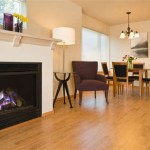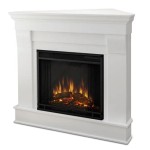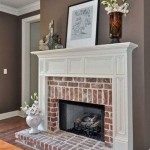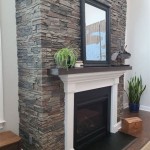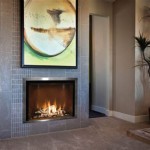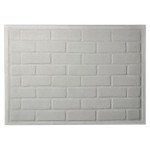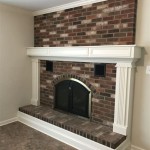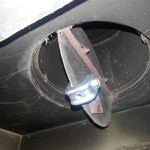Here is an article on Natural Gas Direct Vent Corner Fireplaces:
Natural Gas Direct Vent Corner Fireplaces: A Comprehensive Overview
Natural gas direct vent corner fireplaces offer a unique and efficient heating solution for homeowners seeking to maximize space and ambiance. Unlike traditional fireplaces that require extensive chimney systems and draw combustion air from inside the home, direct vent models operate independently of the existing air supply. This design feature contributes to improved energy efficiency, enhanced safety, and greater installation flexibility. Corner models further capitalize on these benefits by allowing placement in typically underutilized corner spaces, thereby optimizing room layout and creating a focal point.
This article will explore the key features, advantages, installation considerations, and maintenance requirements associated with natural gas direct vent corner fireplaces. Understanding these factors is crucial for making an informed decision about whether this type of fireplace is the right choice for a particular home and lifestyle.
Understanding Direct Vent Technology
Direct vent technology is a closed combustion system. This means the fireplace draws air from outside the home for combustion and vents exhaust gases directly outside through a sealed pipe system. This system usually consists of two concentric pipes: one pipe draws in fresh air, while the other expels exhaust gases. This design isolates the combustion process from the internal air of the house, preventing the depletion of oxygen and the introduction of harmful combustion byproducts into the living space.
The sealed combustion chamber also eliminates the need for a traditional chimney, which can be costly to build and maintain. Direct vent systems can be vented horizontally through an exterior wall or vertically through the roof, providing greater flexibility in placement and installation. This flexibility is especially beneficial for corner fireplaces, which often require unique venting solutions due to their location.
Moreover, the efficiency of direct vent fireplaces stems from their closed combustion system. Because they don't rely on indoor air, they avoid creating drafts or negative pressure within the home. This results in more consistent heating and reduced energy waste. The sealed system also minimizes heat loss through the venting system, ensuring that more of the generated heat is directed into the living space.
Advantages of Corner Fireplace Placement
The corner placement of a fireplace offers several distinct advantages, particularly in terms of spatial optimization and aesthetic appeal. Corners are often underutilized spaces in a room. A corner fireplace transforms an otherwise neglected area into a visually appealing and functional focal point. This can be especially advantageous in smaller rooms or rooms with unconventional layouts where maximizing usable space is a priority.
Aesthetic benefits are numerous. Corner fireplaces create a sense of warmth and coziness, enhancing the overall atmosphere of the room. They can also be incorporated into a variety of design styles, from traditional to contemporary. The visual impact of a corner fireplace can be amplified through the use of decorative surrounds, mantels, and hearths, allowing homeowners to customize its appearance to match their personal taste and décor.
Furthermore, corner placement can improve the flow of traffic within a room. By positioning the fireplace in a corner, it avoids obstructing pathways and allows for more flexible furniture arrangement. This can be particularly beneficial in open-concept living spaces where defining distinct areas is important. The corner fireplace becomes a natural gathering point, encouraging social interaction and creating a comfortable and inviting environment.
Installation Considerations for Natural Gas Direct Vent Corner Fireplaces
Installing a natural gas direct vent corner fireplace requires careful planning and adherence to safety regulations. It is strongly recommended to hire a qualified and licensed professional for the installation process. This ensures that the fireplace is installed correctly, safely, and in compliance with all applicable building codes.
The first step in the installation process is to assess the structural integrity of the corner where the fireplace will be located. The floor must be level and capable of supporting the weight of the fireplace and its surrounding materials. It's also crucial to determine the location of studs and other structural elements to ensure proper anchoring.
Venting requirements are a major consideration. The direct vent system must be properly sized and installed to ensure efficient and safe operation. The vent pipes must be properly sealed and insulated to prevent leaks and minimize heat loss. The manufacturer's instructions should be followed meticulously when installing the venting system. The location of the vent termination point must also comply with local codes and regulations, ensuring proper clearance from windows, doors, and other openings.
Connecting the fireplace to the gas supply line requires expertise and precision. A qualified plumber or gas fitter should handle this aspect of the installation. The gas line must be properly sized and pressure-tested to ensure adequate gas flow to the fireplace. A shut-off valve should be installed near the fireplace for safety purposes.
Electrical connections are also necessary for operating the fireplace's electronic components, such as the ignition system and the blower fan (if equipped). A dedicated electrical circuit should be provided for the fireplace, and all electrical connections must be made by a qualified electrician. Grounding is crucial to prevent electrical shock.
Choosing the Right Model and Features
Selecting the right natural gas direct vent corner fireplace involves considering several factors, including heating capacity, aesthetic style, and desired features. Heating capacity is measured in British Thermal Units (BTUs) and should be chosen based on the size of the room being heated. A larger room will require a fireplace with a higher BTU output to efficiently heat the space.
Aesthetic styles vary widely, from traditional log sets to contemporary glass media. The choice of style should complement the overall design of the room. Traditional log sets create a classic and rustic look, while glass media offers a more modern and minimalist aesthetic. Fireplace surrounds and mantels can further enhance the visual appeal of the fireplace, allowing homeowners to customize its appearance to match their personal preferences.
Various features can enhance the functionality and convenience of a natural gas direct vent corner fireplace. Remote controls allow for easy operation of the fireplace from anywhere in the room. Thermostatic controls maintain a consistent temperature, ensuring optimal comfort. Blower fans circulate warm air throughout the room, improving heating efficiency. Safety features such as flame sensors and automatic shut-off valves provide added peace of mind.
Considering the energy efficiency of different models is also important. Look for models with high energy efficiency ratings to minimize energy consumption and reduce heating costs. Some models also offer adjustable flame heights, allowing homeowners to control the amount of heat produced.
Maintenance and Safety
Regular maintenance is essential for ensuring the safe and efficient operation of a natural gas direct vent corner fireplace. Annual inspections by a qualified technician are recommended to check for any potential problems, such as gas leaks, damaged venting, or malfunctioning components. Cleaning the fireplace and venting system regularly is also important.
The glass front of the fireplace should be cleaned periodically to remove soot and debris. Use a glass cleaner specifically designed for fireplace glass. Inspect the venting system for any obstructions or damage. Remove any debris that may have accumulated in the venting pipes. Check the burner and pilot light for proper operation. Clean the burner ports if they are clogged with carbon buildup.
Safety is paramount when operating a natural gas direct vent corner fireplace. Never store flammable materials near the fireplace. Keep children and pets away from the fireplace when it is in operation. Install carbon monoxide detectors in the home to provide early warning of any potential carbon monoxide leaks. Ensure that the fireplace is properly vented and that the venting system is in good condition. Never tamper with the fireplace's safety devices or controls.
By following these maintenance and safety guidelines, homeowners can enjoy the warmth and ambiance of their natural gas direct vent corner fireplace for years to come while ensuring the safety and well-being of their families.

Corner Series Direct Vent Gas Fireplace By Majestic S Fireplaces

Napoleon Ascent 36 Direct Vent Gas Fireplace Model B36

Corner Ventless Gas Fireplace Visualhunt

Vantage Hearth Direct Vent Gas Corner Fireplace

Superior 40 Inch Dv Traditional Corner Gas Fireplace Drt40c North Country Fire

Majestic Quartz Direct Vent Gas Fireplace 42 Chimney Cricket

Kozy Heat Bayport 36 Direct Vent Gas Fireplace American Eagle And Playsets
Corner Two Sided Gas Fireplace Heat Glo

Majestic 36 Right Corner Direct Vent Multi Side Top Rear Gas Firepl Fireplaces Usa

Empire Breckenridge 32 Inch Deluxe Vent Free Gas Corner Fireplace Firebox
Related Posts

